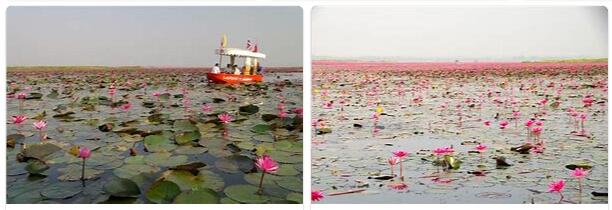Phangnga Bay
bizarre rock islands in the sea
The bay or national park Phangnga is one of the most famous and beautiful in Thailand. It lies between Phuket and Krabi and covers around 400 square meters of coastline and lake area. Over 100 large and small bizarre limestone islands are spread over the entire bay. The partly uninhabited islands are each unique and sometimes appear steep, protruding high out of the water, then again small and humped or they stand next to each other like the prongs of a crown.
In James Bond’s footsteps – the Ko-Ta-Pu needle rock
Since the Ko-Ta-Pu needle rock formed the film set for the agent film “The Man with the Golden Gun” in 1974 and Roger Moore went ashore in front of the decorative limestone monolith on the island of Khao Phingan, the rocks and islands have been named after James Bond. The needle-like rock was actually part of the island, but it broke off a long time ago and now protrudes from the water like an amphora.
James Bond Island towers 300 meters out of the sea behind the rock of the same name. It is eaten through by numerous grottos and caves and climbing plants and bushes grow over its rugged cliffs, which look as if they really have to cling to them.
Other sights of the national park
In addition to the well-known film set, there are many more things to see in Phangnga Bay. Deserve attention, e.g. B. the prehistoric pictures on the cliffs of Khao Khian or the fishing village built on stilts on the island of Panyi. The most impressive way to explore the island world is by boat, past the steep cliffs, under fascinating stalactite caves and along the wild mangrove forests, the bay shows its breathtaking beauty.
The best time and high season for vacation or study trips is from the end of November to March. If you are not afraid of somewhat rougher weather and would like to be rewarded with lower prices and less tourist crowds, you can also travel in the off-season, as the bay is relatively sheltered from the wind.
Talay Bua Daeng
the spectacle of the lotus flowers
Talay Bua Daeng – is more than just a gem among the natural wonders of Thailand. It is a much-visited gem of this region in Southeast Asia. The translation is “Lake of the red lotus flowers”, and anyone visiting this shallow body of water in the Udon Thani province in the north-east of the country will be delighted by the charm of the fragile flowers.
Eight thousand hectares of lake
The city of Kumphawapi is the starting point for tours to Talay Bua Daeng. The approximately eight thousand hectare lake is something of a source of life for the province of Udon Thani, because it feeds the Pao River, which irrigates this region of Thailand. The “lake of the red lotus flowers” is also one of the most important sources of income in the province, which otherwise has only a few tourist attractions.
A sea of lotus flowers
The natural spectacle of Talay Bua Daeng with its millions of lotus flowers is best admired from a boat. In the shore zone, trips of up to two hours in boats with wide seats and a canopy to protect against the omnipresent rays of the sun are offered. The handlebars of the boats stop wherever the lotus flowers cover the surface in a special abundance. This is a paradise for amateur photographers.
A festival for early risers
The impressive flora of Talay Bua Deng is very lush between November and February, when the temperatures are low. Immediately after the end of the rainy season, the lotus blossoms unfold their buds and are usually in full bloom as early as December. In mid-January the popular “Red Lotus Sea Festival” takes place at this mystical place in Thailand. Early risers can enjoy the most beautiful flowers between 6 a.m. and 11 a.m.
